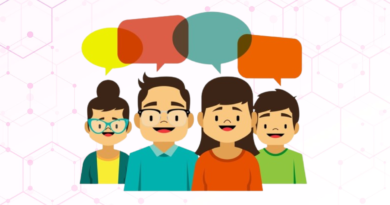The Evolution of E-Learning: Trends and Future Prospects
In the ever-evolving landscape of education, one facet has undergone a profound transformation, reshaping the way knowledge is disseminated and acquired – E-learning. As we stand at the confluence of technology and pedagogy, it’s essential to dissect the intricate tapestry that constitutes the evolution of e-learning. From humble beginnings to its current sophisticated state, and the tantalizing future it promises, the journey of e-learning is nothing short of a captivating odyssey.
The Digital Renaissance of Education
In the not-so-distant past, education was confined to the hallowed halls of traditional classrooms, bound by the constraints of geography and time. However, with the advent of the digital age, a paradigm shift unfolded, ushering in the era of e-learning. This digital renaissance in education has not only democratized access to knowledge but has also paved the way for innovative methodologies that transcend the limitations of conventional learning.
As we embark on this exploration of the evolution, trends, and prospects of e-learning, it’s imperative to recognize the seismic impact it has had on education globally. From its nascent stages characterized by rudimentary online modules to the current landscape adorned with immersive technologies, e-learning has become a potent force, challenging traditional norms and pushing the boundaries of educational possibilities.
A Glimpse into E-Learning’s Past
To comprehend the present and envision the future, we must first cast our gaze upon the past. The origins of e-learning can be traced back to text-based modules and basic interactive exercises. Early adopters navigated through virtual corridors of knowledge, often facing technological hurdles that seem archaic by today’s standards. However, these pioneers laid the foundation for what would become a revolution in educational delivery.
The initial challenges of limited interactivity and a one-size-fits-all approach gradually gave way to the integration of multimedia elements. As bandwidth capabilities expanded, so did the possibilities. The incorporation of audio, video, and interactive simulations breathed life into the once-static online learning experience. This evolution, driven by technological advancements, set the stage for the dynamic e-learning landscape we witness today.
The Present Tapestry of E-Learning
In the contemporary era, e-learning has transcended the confines of desktop computers, breaking free from the shackles of physical locations. The rise of mobile learning, often referred to as m-learning, has become a cornerstone of modern educational strategies. Learners now carry the power of education in their pockets, accessing learning materials at their convenience.
The present-day e-learning experience is characterized by personalized learning paths, adaptive platforms, and a diverse array of content formats. Learners no longer passively consume information but actively engage with personalized content tailored to their preferences and learning styles. The integration of gamification elements and microlearning techniques further enhances engagement, making the learning journey not just informative but enjoyable.
Pioneering the Future – Emerging Trends
The future of e-learning holds promises that extend beyond the horizon of current capabilities. As we peer into the crystal ball of educational technology, several trends emerge as harbingers of the next phase in e-learning evolution.
Technology Integration Beyond Boundaries:
- Emerging technologies such as augmented reality (AR) and virtual reality (VR) are poised to redefine the immersive learning experience.
- Artificial Intelligence (AI) will play a pivotal role in hyper-personalization, providing learners with tailored content and feedback.
Mobile Learning 2.0:
- Optimization for mobile devices will evolve, leveraging advancements in 5G technology and ensuring a seamless learning experience across various screen sizes.
- Increased emphasis on responsive design and accessibility features for diverse user demographics.
Continued Gamification Sophistication:
- Gamification will evolve beyond badges and points, seamlessly blending entertainment and education to create compelling learning experiences.
- Integration of advanced analytics to assess the effectiveness of gamified elements in enhancing learning outcomes.
Blockchain Revolution in Credentialing:
- Blockchain technology will revolutionize the certification and credentialing process, ensuring security, transparency, and portability of educational achievements.
- Decentralized identity verification will become the norm, mitigating concerns related to credential fraud.
The Social Learning Renaissance:
- Real-time collaboration tools and virtual classrooms will take social learning to new heights.
- Global learning communities will foster cross-cultural exchange, breaking down geographical barriers in the pursuit of knowledge.
In the not-so-distant future, e-learning is poised to become an integral part of continuous learning and professional development. The lines between formal education and lifelong learning will blur, with e-learning platforms seamlessly integrated into career advancement trajectories. The concept of a “degree for life” will gain prominence as individuals engage in continuous upskilling and reskilling to stay abreast of rapidly evolving industries.
The incorporation of advanced data analytics and learning analytics will pave the way for predictive modeling, enabling educators to identify potential learning gaps early on. This proactive approach, coupled with AI-driven personalization, will revolutionize the way content is delivered and assessed, ensuring a tailored learning experience for every individual.
Conclusion: A Visionary Odyssey
As we conclude our journey through the evolution, trends, and prospects of e-learning, it is evident that we stand at the cusp of a visionary odyssey in education. The synergy of technology and pedagogy is transforming the educational landscape, offering learners unprecedented opportunities for growth and self-discovery.
The evolution of e-learning, from its humble beginnings to the sophisticated landscape of today, is a testament to the resilience of innovation in education. The trends shaping its future herald a new era of inclusivity, personalization, and global collaboration. The educational tapestry of tomorrow is woven with the threads of adaptability, accessibility, and continuous learning—a tapestry that holds the promise of a brighter, more interconnected future for learners around the globe.




